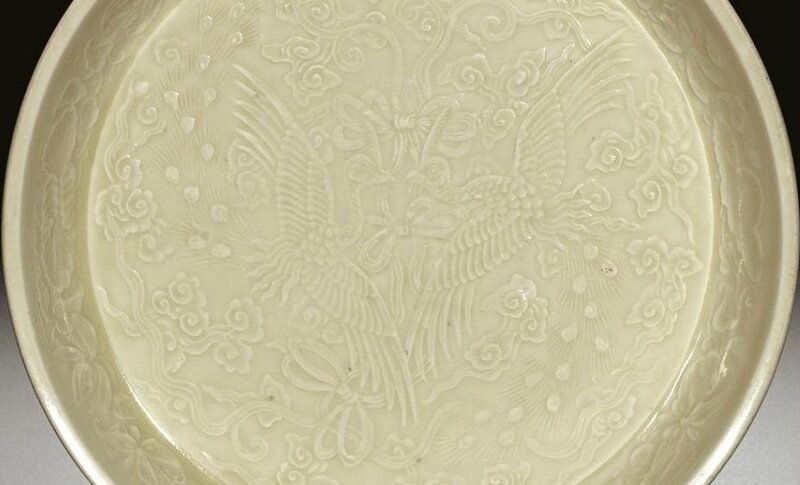Lot 58. A fine silver stemcup, Tang dynasty, 7th-8th century, 6.8cm., 2 5/8 in. Estimate 6,000 — 8,000 GBP. Lot sold 156,500 GBP. Photo: Sotheby's.
the deep bowl flaring towards the rim and divided horizontally just below by rim by a single raised band, supported on a knopped stem rising from a wide splayed foot, with some bright malachite green encrustation to the sides. WEIGHT 78.5g.
Literature: Bo Gyllensvärd, Chinese Gold and Silver in the Carl Kempe Collection, Stockholm, 1953, pl. 107.
Note: Undecorated Tang silver pieces are comparatively rare, although the plain surfaces are particularly effective in emphasizing the exquisite Tang shapes with their harmonious profiles and sharp edges. A very similar undecorated silver stemcup was sold in these rooms, 21 June 1983, lot 56; and a copper alloy stemcup of the same shape in the Kuboso Memorial Museum of Art, Izumi, is published in Sekai bijutsu tai zenshu. Toyo hen, vol. 4, Tokyo, 1997, pl.161.
Compare also an undecorated Tang silver cup with ring handle, with a similar plain raised rib below the rim, excavated at Shapo, Xi'an and now in the Shaanxi History Museum, Xi'an, included in the exhibition The Glory of the Silk Road. Art from Ancient China, Dayton Art Institute, Dayton, Ohio, 2003, cat. no.106, together with a decorated silver stemcup of the same shape as the present piece, from the same site but now in the National Museum of Chinese History, Beijing, ibid., cat. no.105.
Sotheby's. London, Masterpieces of Chinese Precious Metalwork: Early Chinese Gold and Silver, 14 May 2008















































